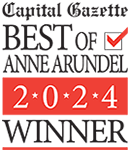Category Archives: Health & Wellness
Connect to Care with MyChart
You can access your medical records, request an appointment, refill a prescription or ask your doctor a question about a non-urgent issue. The MyChart patient portal makes that – and more – possible anywhere you have an internet connection.
Log in to MyChart 24/7 from your computer, cell phone or tablet. It’s secure, easy to use, and is operated by MPCP in partnership with the University of Maryland Medical Center. With MyChart, you can:
- Request or cancel an appointment. View details of your past and upcoming appointments.
- Request prescription refills: Send a refill request for any of your refillable medications.
- Access test results: No more waiting for a phone call or letter. View your results and your doctor’s comments within days.
- Communicate with your doctor: Get answers to your non-urgent medical questions from the comfort of your own home (select providers).
- Review your health records: Have a question about current or past treatment? See your health summary, a list of your medications, or your visit history.
- Pay your bill.
Not registered for MyChart ? Contact your MPCP office and make sure they have your current email address and mobile phone number. With your email, they will send you an invitation to sign up; with your mobile phone number, they will send a text.
Already registered? Sign in to MyChart today and enjoy for the benefits of being connected to MPCP.
Have questions? See the MyChart FAQs.
Tick Bite FAQs
By Jamie Harms, M.D.
Warmer weather is here, and with it, ticks are back. Here are some frequently asked questions about ticks and tick bites.
What should I do if I am bitten by a tick?
Use tweezers to grasp the tick as close to your skin as possible, then pull the tick off with steady pressure. Then wash your hands and the area of the bite with soap and water. Sometimes, the mouthparts of the tick will break off and stay in the skin. If you can remove them easily, use the tweezers to pull them out. If you can’t remove them easily, just let the skin heal. Your body will break down the remaining mouthparts over time.
What kind of tick bit me?
Lyme disease is carried by the deer tick, also known as the blacklegged tick. It is not carried by dog ticks, so you should try to identify the type of tick that bit you. The CDC has excellent illustrations of the ticks found in Maryland. The ticks that are out in the spring are nymphs. They are very small, about the size of a poppy seed.
What is my risk of getting Lyme disease from a tick bite?
Ticks need to be attached at least 36 hours to transmit Lyme disease. If you pull off a tick which is crawling on your skin or which is not engorged with blood, you will not get Lyme disease.
Should I take an antibiotic after a tick bite to prevent Lyme disease?
Researchers still don’t have a clear answer about this. There have been some small studies suggesting that a single dose of doxycycline may reduce your risk of getting Lyme disease after a tick bite, but only under these conditions:
- You are not allergic to doxycycline. No other antibiotics have been studied for preventing Lyme disease. Children must be at least 8 years old to take doxycycline. Pregnant women should not take doxycycline.
- The tick can be identified as a deer tick.
- The tick has been attached for more than 36 hours based on the time of exposure or the observation that the tick is engorged with blood.
- You can take the dose of doxycycline within 72 hours of removing the tick.
Experts do not recommend that people take antibiotics to try to prevent other tick-borne diseases, such as anaplasmosis, babesiosis, ehrlichosis or Rocky Mountain Spotted fever.
Do I have Lyme disease?
Most people with Lyme disease will get a rash around the site of the tick bite one to four weeks after the bite. The rash is often described as “bullseye” rash, because it is often red on the outside and clear on the inside. Lyme disease rashes can also come in other patterns, though. A Lyme disease rash gets bigger each day, and it usually over two inches wide. Check out these photos from the researchers at Johns Hopkins Hospital.
When should I see my doctor?
If you were bitten by a tick and have an expanding red rash around the bite or have “summer flu” symptoms, you should see your primary care provider.
Pain Management and Opioid Prescribing at MPCP
In this video, Dr. John Billon explains how to recognize when someone is abusing opioids.
By: Jerry Levine, M.D. FACP, Vice President & Medical Director
Pain management is a real problem that our MPCP providers treat on a regular basis. The CDC estimates that 11% of adults experience daily pain. There is no question that over-prescribing of legal opioids, as well as the use of illegal opioids, has caused an epidemic of opioid abuse in Maryland.
What we do to protect you
We at Maryland Primary Care Physicians practice pain management to ensure patients have access to safer, more effective treatment while reducing the risk of opioid abuse, overdose, and death.
MPCP providers strictly follow the guidelines established in Maryland for narcotic prescribing. When prescribing any controlled medication such as opioids, the prescription is cleared through the state prescription drug monitoring program (PDMP). This is an electronic database that tracks controlled substance prescriptions at the time of prescribing. This can help identify patients who may be misusing prescription opioids or other potential medication abuse.
All of our providers also follow the published CDC guidelines for prescribing opioid medication. This is not only consistent with good clinical practice, but it is also required by the State Board of Physicians and is enhanced by continued education required to maintain a medical license in Maryland.
In establishing our goals of treatment, we first consider non-pharmaceutical and nonopioid therapy. We strongly encourage integrated pain management and collaborative working relationships with other providers (physical therapists, physical medicine specialists, pharmacists, behavioral health providers, and, importantly, Pain Management Specialists). Consultation and referral is an important part of pain management. Discussion of risk and benefits of therapy with patients, goals of treatment, and duration of medication management is key for effective treatment. At Maryland Primary Care, we have peer review requirements, which not only monitor controlled medication prescribing but allow our providers to consult their peers for pain-management problems.
How you can prevent opioid abuse
Patients can take these steps to ensure safe use of prescriptions:
- follow the directions as explained on their prescription label,
- never change the dose without consulting their provider,
- never use another person’s prescription,
- never share their prescriptions with others.
Storing and disposing of medication properly when treatment is completed is also extremely important. Follow these guidelines from the U.S. Department of Health and Human Services.
Pain management is common to our practice and requires an individualized response. Treatment can be challenging for healthcare providers as well as patients. It is possible to improve the way we manage pain and the way opioids are prescribed. Our goal in treatment at Maryland Primary Care Physicians is to reduce the number of people who misuse, abuse, or overdose from opioids while making sure our patients have access to safe and effective pain management.
 Dr. Levine is a MPCP partner and is certified by the American Board of Internal Medicine. He serves as MPCP’s Medical Director and Vice President, and sees patients at the Columbia office.
Dr. Levine is a MPCP partner and is certified by the American Board of Internal Medicine. He serves as MPCP’s Medical Director and Vice President, and sees patients at the Columbia office.
Vaping and E-Cigarettes: Is Smoking Still Bad for You?
By: Abby Griffin, CRNP
While cigarette smoking is in decline, the use of e-cigarettes has rapidly expanded in recent years, especially among young adults and teens. The popularity of “vaping” has grown faster than the scientific knowledge about it, leaving questions about vaping’s health effects.
E-cigarettes were introduced in the U.S. in 2007 as an alternative to tobacco cigarettes. Since they don’t burn tobacco, vapers could “light up” indoors, where cigarette smoking was banned. E-cigarette makers also promote them as a tool to quit smoking.
How vaping works
E-cigarettes are battery-operated devices that can look like a real cigarette or pen. They have containers filled with liquid that’s usually made of nicotine, flavorings, and other chemicals. A heating device turns the liquid into vapor that you inhale when you take a puff. E-cigarette liquids come in dozens of flavors, including mint, spices and fruits.
Vaping has increased in popularity. There are hundreds of types of e-cigarettes on the market, but one brand, JUUL, has become the choice of many young adults and teens. About three million high school students reported vaping in 2018.
Safer than cigarettes?
E-cigarette makers claim that vaping is safer than smoking and can help smokers quit. The CDC and other health organizations generally agree that vaping is safer since vapor doesn’t contain the many toxic chemicals found in tobacco smoke. However, the FDA does not regulate e-cigarettes – their contents are not controlled – and it has not approved them as a quit-smoking aid.
Also, most e-cigarette liquids contain nicotine, the highly addictive drug found in tobacco, so vapers can get hooked on nicotine just like smokers. And smokers who use vaping to quit cigarettes may just be trading one addiction for another.
Nicotine has been shown to harm the developing brains of kids and may damage the heart and arteries. Some other chemicals in vapor have been linked to cancer, as well as heart and respiratory disease.
Other problems with e-cigarettes:
- Vaping is a gateway to smoking. Teens who vape are 30% more likely to start using cigarettes than those who don’t vape.
- Teens don’t know what’s in them. About 66% think that vapor only contains flavoring and aren’t aware of nicotine or other potentially harmful ingredients.
- They can blow up. Although not common, e-cigarette batteries can overheat, catch fire or explode, causing serious injury.
- Since e-cigarettes are largely unregulated, there is no guarantee their contents are safe. This point has been tragically highlighted with the recent outbreak of lung infections by people vaping products containing THC. The outbreak has sickened hundreds of people and resulted in many deaths.
Putting the brakes on vaping
As a result of these concerns, officials have taken several steps to restrict vaping:
- The minimum age to purchase e-cigarettes was set at 18.
- The FDA is enacting regulations to ban the sale of fruity or sweet-flavored e-cigarettes at most retail locations, such as convenience stores where underage users may get them.
- In Maryland, there is no statewide ban on indoor vaping — except on MARC commuter rail system train – but Baltimore City and Howard, Montgomery and Prince George’s counties have set tougher rules.
E-cigarettes may have the potential to help smokers quit, but more young people are using them, facing addiction and potential health issues. The bottom line is, smoking is still risky, whether you use a cigarette or a plastic tube.
 Abby Griffin, Certified Registered Nurse Practitioner, sees patients at MPCP’s Pasadena office. She is board certified by the American Association of Nurse Practitioners.
Abby Griffin, Certified Registered Nurse Practitioner, sees patients at MPCP’s Pasadena office. She is board certified by the American Association of Nurse Practitioners.



